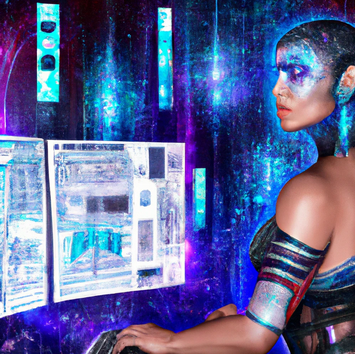The user experience (UX) of the future will impress users with advancements generated by ongoing technological innovations, evolving user expectations, and an increasing emphasis on accessibility and inclusivity. Here are some prognostications for the UX of the future:
Immersive Experiences: With the advancement of augmented reality (AR), virtual reality (VR), and mixed reality (MR) technologies, users will expect more immersive experiences that blur the line between the digital and physical worlds.
Adaptive and Personalized UX: AI and machine learning will enable more adaptive and personalized UX designs, tailoring interfaces and content to individual users’ preferences, behaviors, and contexts.
Voice and Gesture Interaction: As voice recognition and motion tracking technologies improve, users will increasingly expect to interact with digital products through voice commands and intuitive gestures, reducing reliance on traditional input methods like keyboard and mouse.
Emotion and Sentiment Recognition: AI-powered emotion and sentiment recognition will allow UX designs to adapt to users’ emotional states, providing empathetic and personalized experiences that respond to users’ feelings in real-time.
Seamless Cross-Platform Experiences: Users will expect seamless experiences across devices and platforms, with apps and interfaces that maintain a consistent look and feel, regardless of the device being used.
Inclusive Design: In the future, UX designers will place a stronger emphasis on inclusivity and accessibility, designing products that cater to users of all abilities, ages, languages, and cultural backgrounds.
Ethical and Transparent Design: As concerns about privacy and data security grow, users will demand more ethical and transparent UX designs that prioritize user privacy, security, and consent.
Haptic Feedback and Tactile Interfaces: Advances in haptic technology will enable more realistic tactile feedback, allowing users to “feel” digital interfaces and enhancing the immersive quality of digital experiences.
Biometric Authentication: As biometric authentication methods become more advanced and accurate, users will expect a more secure and seamless UX, with interfaces that rely on facial recognition, fingerprint scanning, or other biometric data for access.
Environmentally Conscious UX: With growing awareness of environmental issues, UX designers will need to consider the ecological impact of their designs, incorporating sustainable practices and features that encourage eco-friendly behavior.
As technology continues to evolve and user expectations shift, the UX of the future will be shaped by these trends, providing more immersive, adaptive, and intuitive experiences that cater to a diverse range of users and their unique needs.

